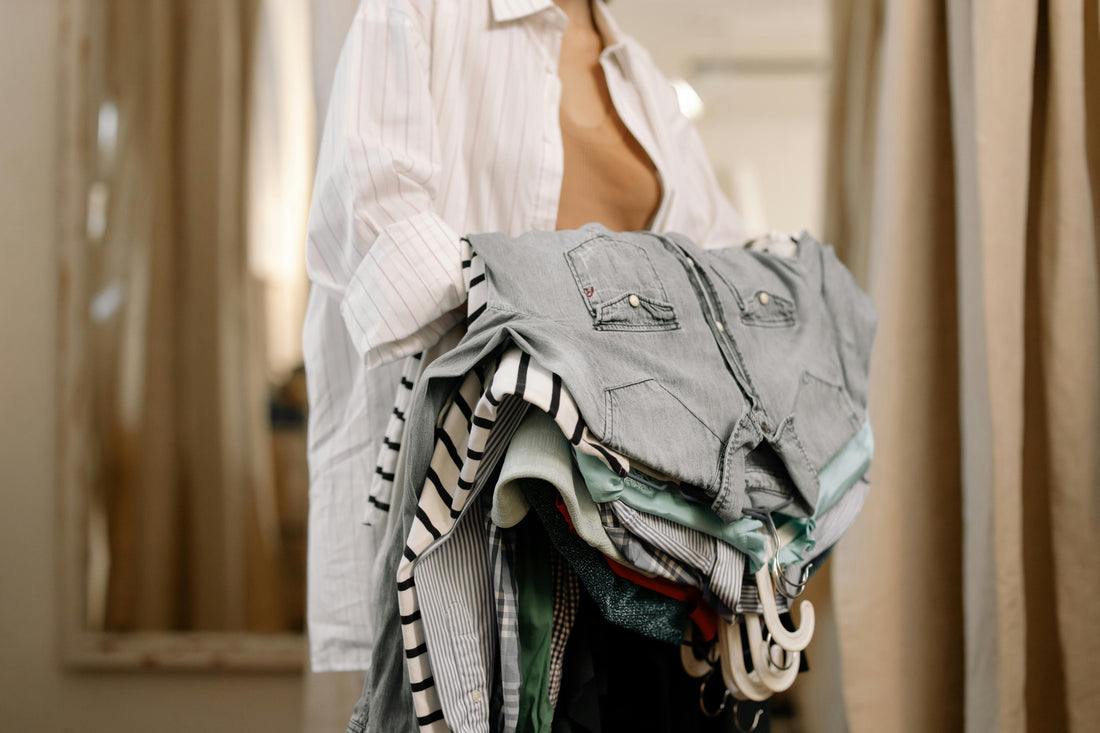
The Fast Fashion Predicament
Share
Hello, Woke Fashionistas! Today, let's delve into a critical topic that deserves our attention – the environmental repercussions of fast fashion. As our passion for the latest trends drives the fashion industry to unprecedented heights, it's crucial to recognize the toll this rapid pace of consumption takes on our planet.
Fast fashion, marked by quick turnovers of trendy collections, presents a compelling dilemma. While the appeal of affordable and chic clothing is undeniable, the environmental costs are substantial and demand our consideration.
1. Resource Depletion: Draining Our Planet
Fast fashion places an enormous strain on resources, particularly water, energy, and raw materials. Take cotton, a fashion staple. Its cultivation demands a significant water footprint, exacerbating water scarcity in various regions.
2. Pollution Crisis: Toxic Threads
The textile industry's reliance on toxic chemicals for processes like dyeing and finishing contributes to environmental pollution. Beyond harming air and water, these chemicals pose severe health risks to workers and local communities.
3. Waste Avalanche: The Throwaway Culture
The rapid evolution of trends fosters a throwaway culture. Clothes go from the rack to landfill in record time, adding to the colossal textile waste problem. Unfortunately, these discarded garments can take centuries to decompose.
Hope on the Horizon: Your Role in Change
Amidst the challenges lies an opportunity for change. As consumers, we wield significant influence in steering the fashion industry towards a more sustainable future.
1. Choose Wisely: Opt for Eco-Friendly Materials
Make a difference with your choices. Opt for clothing made from eco-friendly materials like organic cotton, hemp, or Tencel. These materials boast lower environmental impacts and promote responsible sourcing.
2. Embrace Circular Fashion: Break Free from Constant Consumption
Shift towards a circular fashion model by supporting durable designs, repair initiatives, and recycling. This approach minimizes waste and promotes a more sustainable lifecycle for your wardrobe.
3. Knowledge is Power: Educate Yourself and Others
Equip yourself with knowledge about the environmental impact of fast fashion. Raise awareness and make informed choices, driving demand for sustainable practices within the industry.
4. Second-Hand Chic: Thrift Your Way to Sustainability
Explore the charm of second-hand and vintage shopping. Not only is it budget-friendly, but it also reduces the demand for new items, promoting a more circular approach to fashion consumption.
5. Quality Over Quantity: Shift Your Perspective
Challenge the notion that more is better. Invest in fewer, high-quality pieces that endure. This shift not only curtails waste but also proves cost-effective in the long run.
6. Support Sustainable Brands: Vote with Your Wallet
Explore and support fashion brands committed to sustainability and ethical practices. Your purchasing decisions are a powerful form of voting – a vote for a greener and more sustainable future.
7. Get Creative: Upcycling and DIY Fashion
Express your unique style through upcycling old clothes or diving into do-it-yourself (DIY) projects. Transforming existing pieces breathes new life into them and diminishes the need for constant new purchases.
8. Minimalism in Fashion: Curate a Sustainable Wardrobe
Simplify your style by curating a wardrobe with timeless, versatile pieces. This approach not only aligns with a minimalist ethos but also contributes to a reduction in overall consumption.
9. Advocate for Change: Use Your Voice
Amplify your voice in advocating for sustainable practices within the fashion industry. Engage with brands, support initiatives, and actively participate in discussions about sustainable living.
10. Conscious Consumerism: Make Informed Choices
Before making a purchase, consider the environmental and ethical implications. Being a conscious consumer influences brands to adopt more sustainable practices.
11. Community Engagement: Power of Local Initiatives
Join or initiate local initiatives promoting sustainable fashion practices. Community engagement fosters shared responsibility and creates a ripple effect of positive change.
12. Education for Future Generations: Shape a Sustainable Legacy
Incorporate sustainable fashion education into school curricula and community programs. Instilling awareness in the younger generation creates a foundation for sustainable practices.
The Power is in Our Hands
In conclusion, the future of fashion rests in our hands. By reevaluating our consumption habits and advocating for change, we can transform the fashion industry into a beacon of sustainability. So, let's commit to being mindful of where our clothes come from and how they're made. Together, we can weave a more sustainable and stylish world for generations to come.Every conscious choice is a step toward a greener, more sustainable future. Whether it's choosing eco-friendly materials, supporting sustainable brands, or engaging in community initiatives, each action contributes to positive change. The journey towards sustainable fashion is not just a trend; it's a movement, and you're an essential part of it. So, let's fashion a tomorrow that is not only stylish but also sustainable.
